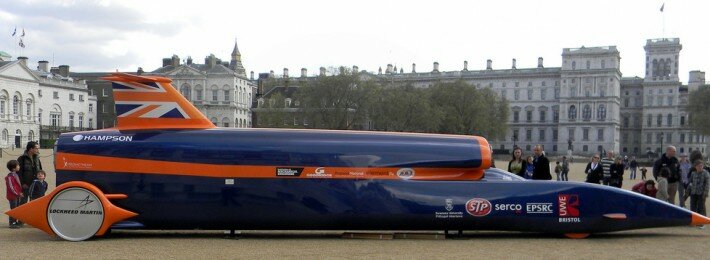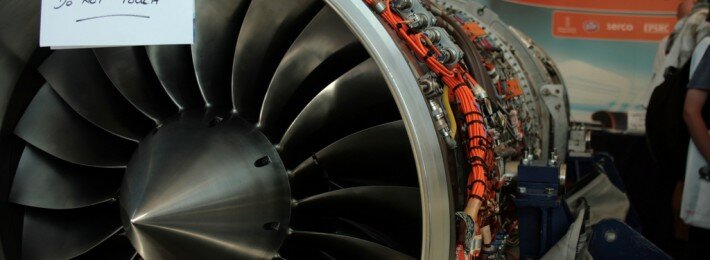Science, Engineering and Adrenaline
The Adrenalist wanted to know if controlling and managing a jet car program capable of going faster than Mach 1 was similar to handling high performance military jet aircraft. However, the premise didn’t necessarily apply, according to Wing Commander Andy Green, Bloodhound SSC’s primary driver.
“In the first place, Bloodhound stays on the ground!,” he said with a grin. “That leads to a lot of simplicity, as we are running on a known and controlled environment, with the car operating in a ‘fail-safe’ way: if the engines fail on Bloodhound, for example, then it simply slows down early, whereas an engine failure in a airplane can be a lot more exciting, and not in a good way.”
“The challenge in driving Bloodhound comes in driving a new and untested vehicle, having to learn about its handling and performance whilst running precise test programs. I will have to learn quickly as we will only be able to do a limited number of test runs due to cost, weather, etc., and there will be a lot of distractions including very high noise levels, vibration, high temperatures and MUCH faster acceleration than a jet fighter. The experience and discipline of being a military pilot is the ideal preparation for driving Bloodhound, but there will still be a lot for me to think about.”
 How about the risk? Is driving the Bloodhound more or less dangerous than military flying?
How about the risk? Is driving the Bloodhound more or less dangerous than military flying?
“It is not possible to compare Bloodhound with military flying, as they are fundamentally different activities and there is no database against which to assess relative safety performance. Bloodhound has an extensive safety process, with our own unique type of ‘safety case’ (referred to as a ‘confidence map’) which captures all hazards and mitigation’s, together with the principles involved and the interactions between different hazards. This is easily the most sophisticated risk management process in the history of the Land Speed Record, and I am very happy with the results so far.”
How about the planning processes including preparation, testing and actual ‘mission’ planning?
“At the mission (strategic) level, a huge amount of planning goes into delivering the aim of Bloodhound, which is to inspire a new generation with the excitement of science and engineering. This in turn drives the ultimate target (1000 mph), the communications strategy (we are sharing everything via the internet, from initial design problems to live in-Car footage when we run) and the team construct (we have almost half of the team dedicated to communications and education, plus over 300 part-time volunteers that we have trained up to cover schools across the country).”
“At the process (tactical) level, the run planning is driven by the requirements of a detailed and evolving test program, which echoes the sort of development trials that the military might use. We have been planning the test requirements for at least 2 years and will continue to work on it for the next 2 years – it’s a long-term and detailed process which influences the design and build of the Car (for instance, do we need to carry enough fuel/water/nitrogen/electrical power for one run or for 2 runs back-to-back?) as well as how we operate it.”
There we have it; a straight-forward assessment direct from the man who will be strapping himself into the Bloodhound SSC shortly, then follow up by attempting to push his vehicle beyond Mach 1 – on the ground. That said, regardless of the engineering risks associated with the challenge, or simply overcoming the emotional hurdles, all we can say is that if the program ain’t adrenaline-prone enough for you, then we don’t know what is.






Comments